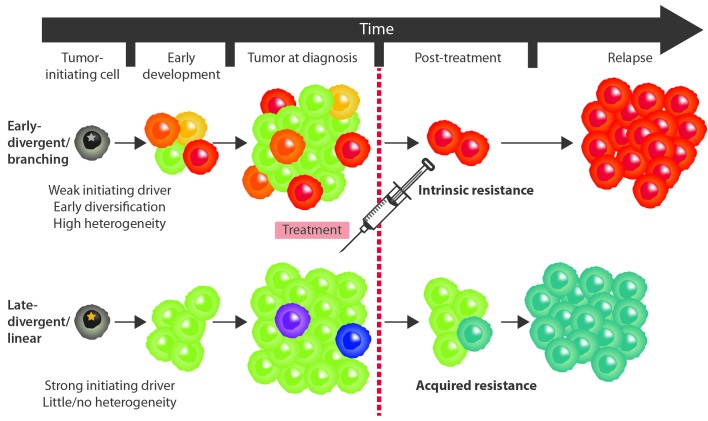Figure 1.
Schematic representation of two patterns of genetic evolution in clonally-related relapses of aggressive B-cell lymphomas. Different colors represent genetically distinct clones that possess private genetic alterations due to independent genome evolution. (A) In the early-divergent/branching scenario, the divergence occurs early in tumor development. The majority of subpopulations stagnate but one clone eventually acquires the effective combination of drivers, expands and gives rise to a heterogeneous primary tumor. The dominant population is exterminated by the treatment, however, an intrinsically resistant subclone exists and gradually gives rise to a relapse. (B) In the late-divergent/linear evolution scenario, the tumor initially possesses a strong driver combination. Therefore, the neoplastic cells grow fast and unrestricted, giving rise to a rather homogeneous primary tumor. Such a tumor is almost exterminated by the treatment but an acquired resistance emerges. The resistant subclone already has drivers of effective growth and rapidly replenishes the tumor mass giving rise to a more rapid relapse.

